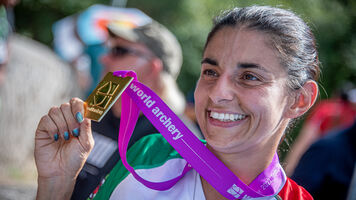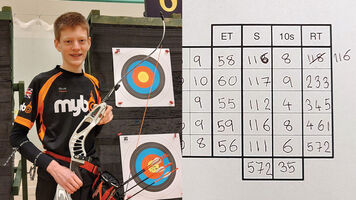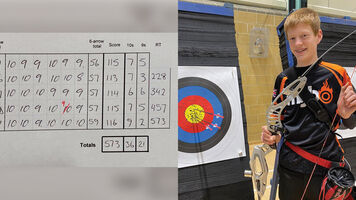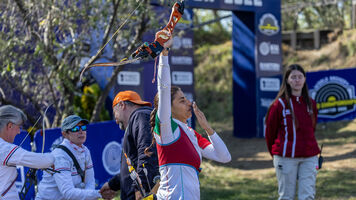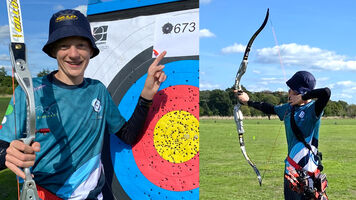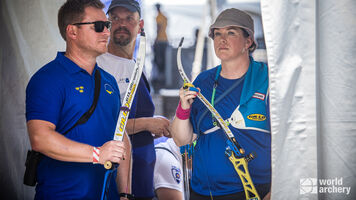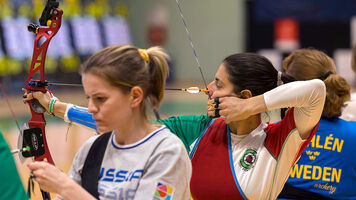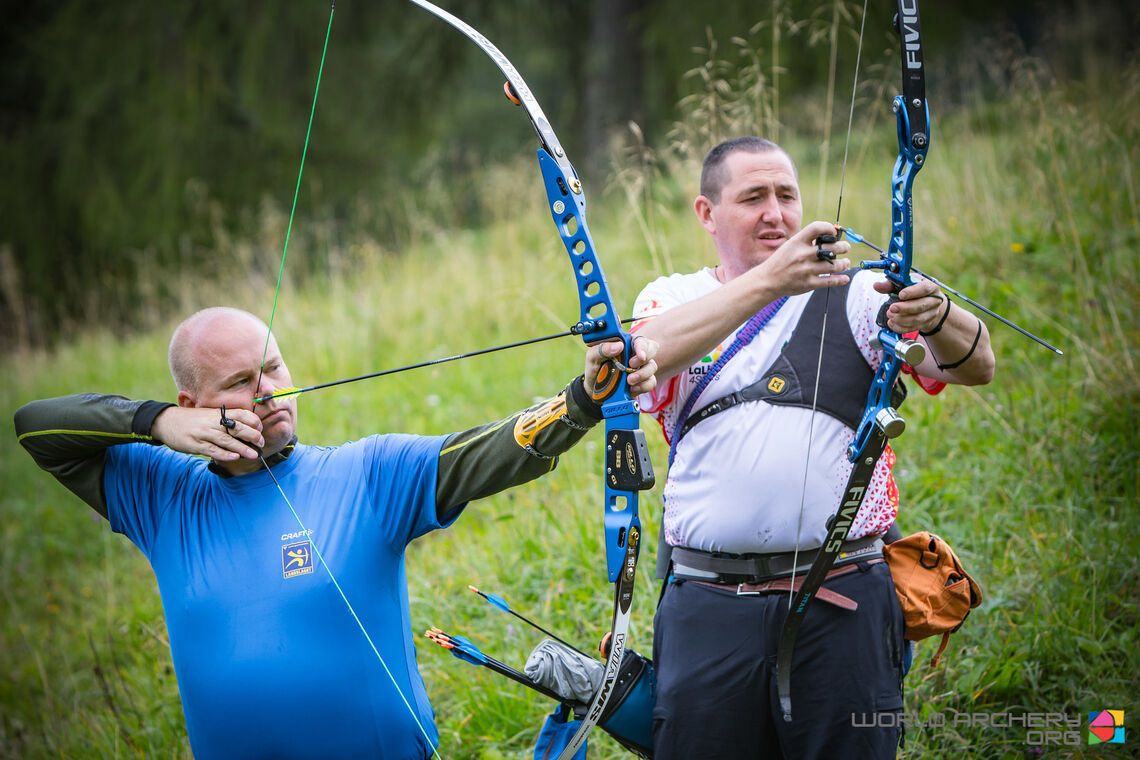
Barebow
Barebow is a basic bowstyle used at international competition.
The barebow is a basic style of recurve bow, which uses the same modern materials but does not permit accessories to aid in aiming or stabilisation.
Barebow was included on the programme of the first World Archery Field Championships in 1969 and has featured on the programme of the World Games since 1985. The international rules for the barebow were recognised only for field and 3D archery until 2020, when the style was also recognised for target archery.
An archer shooting a barebow pulls the string back to their face using their fingers, aims by looking down the length of the arrow and, upon release, the energy stored in the bent limbs transfers through the string and into the arrow, sending it downrange to the target.
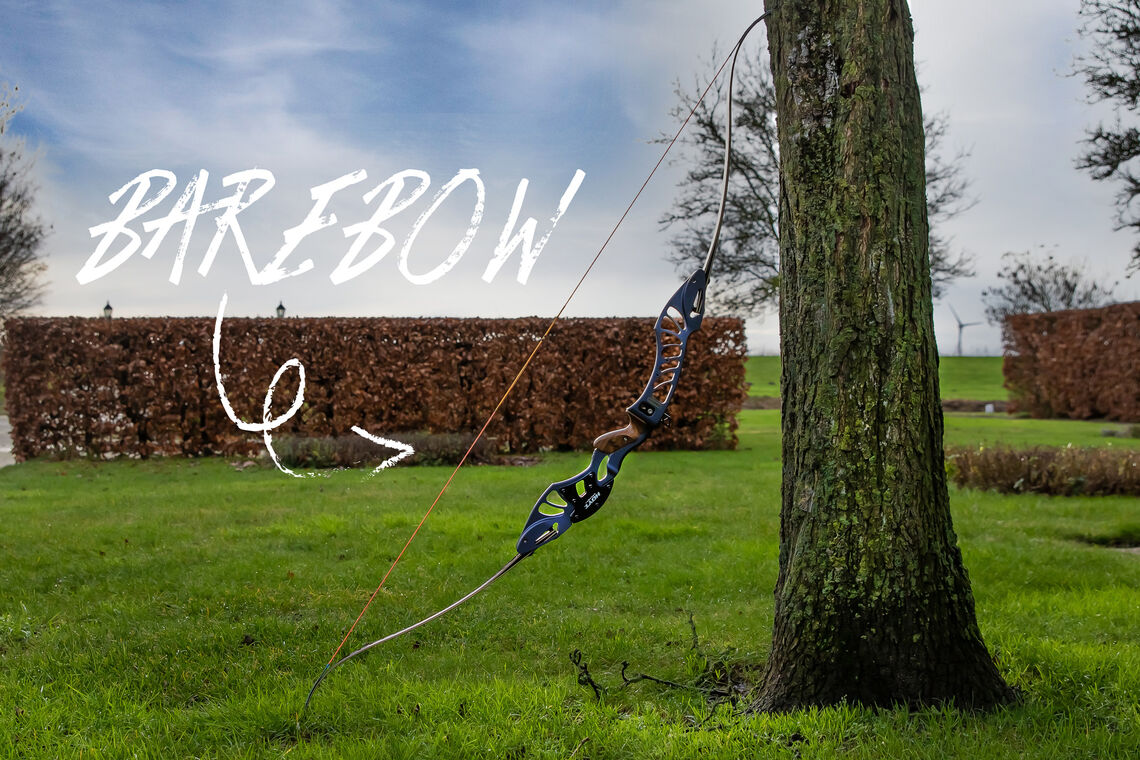
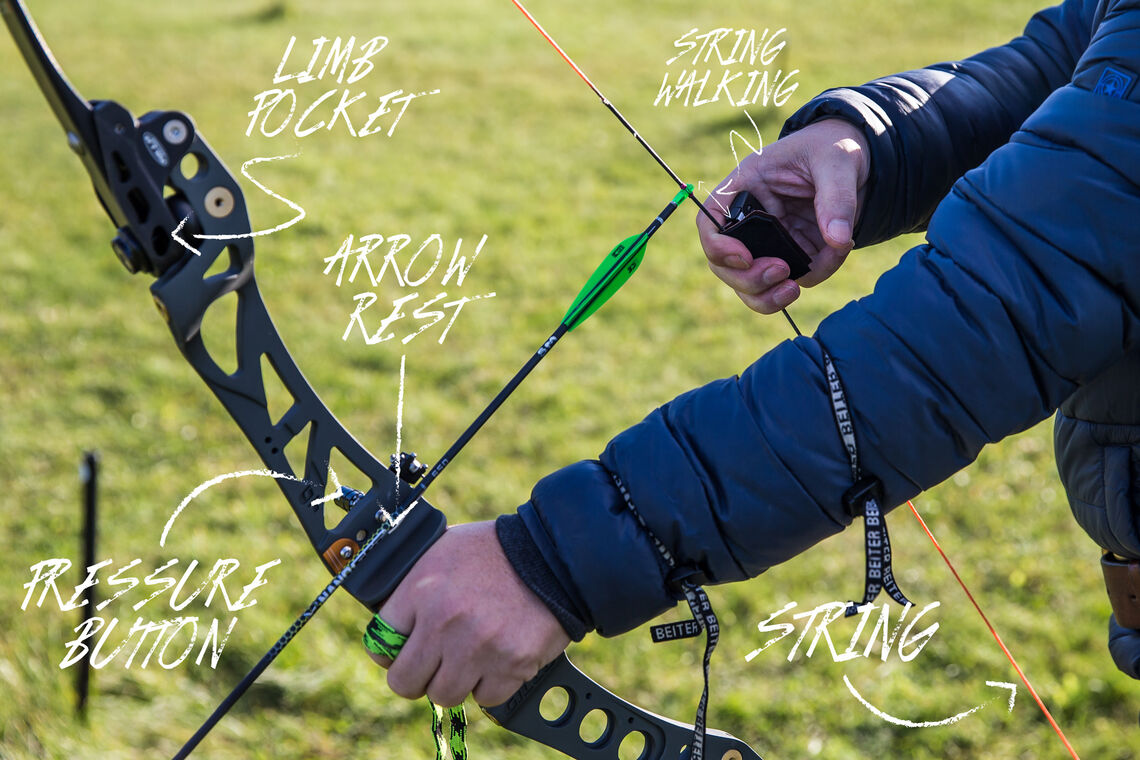
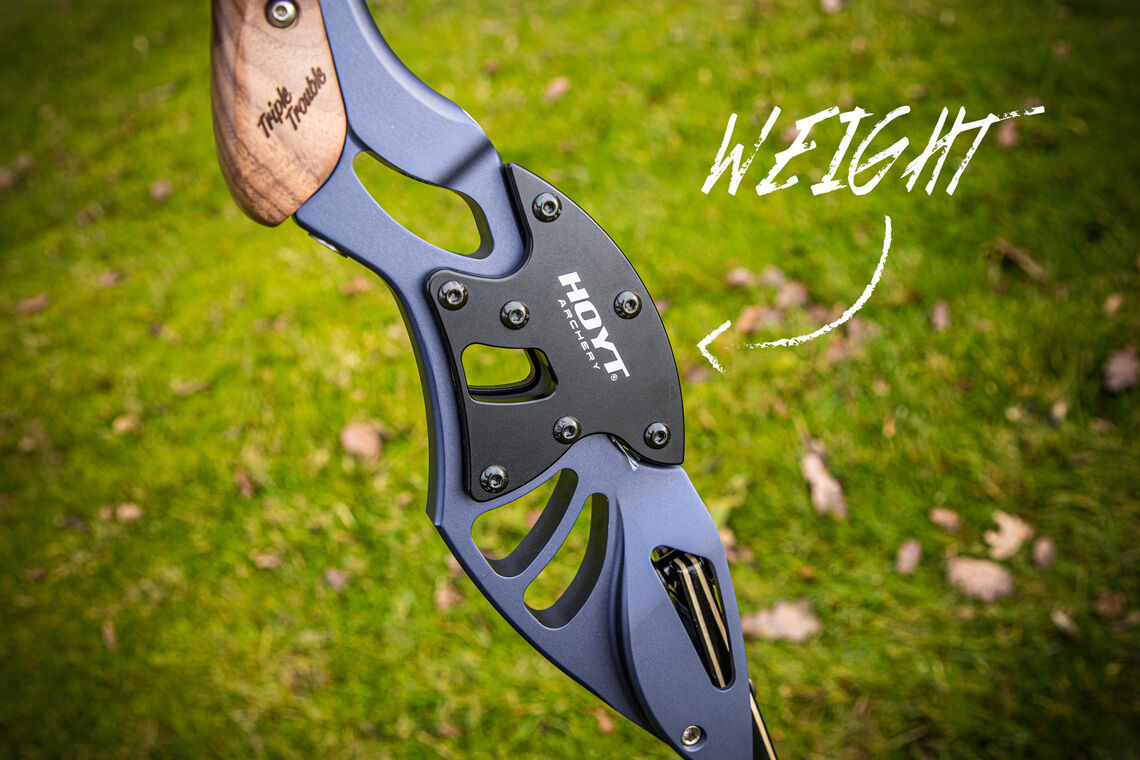
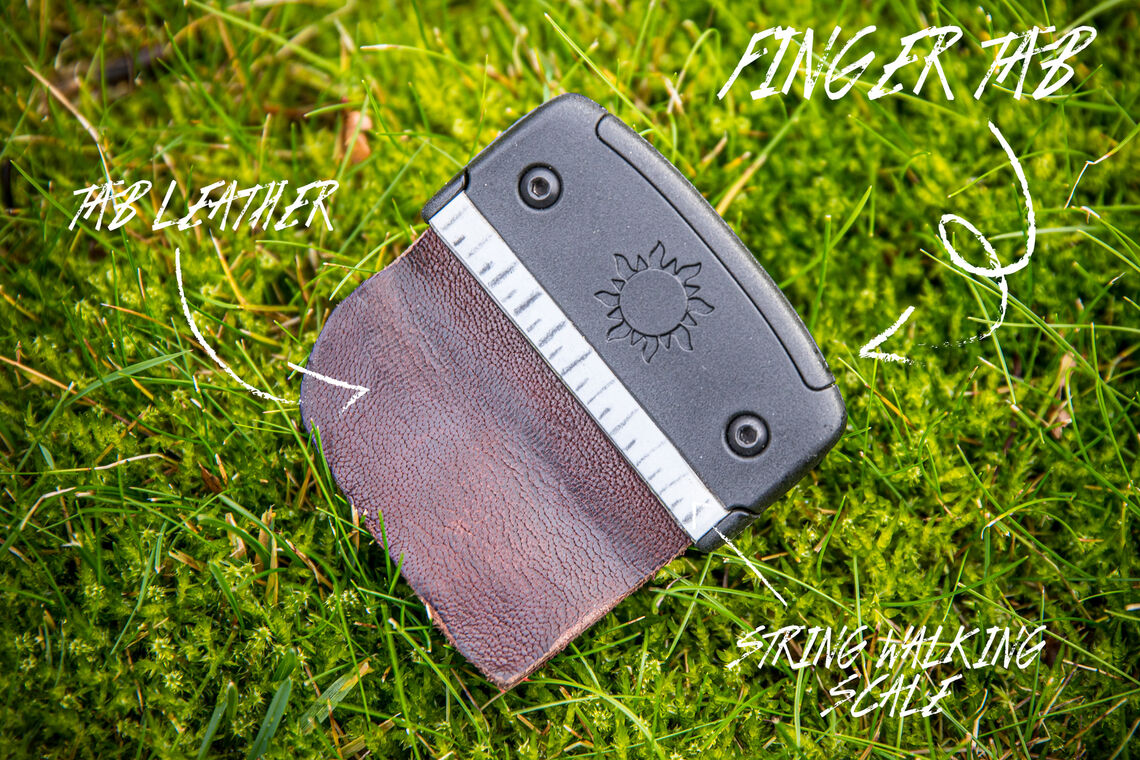
Equipment
The riser of a barebow is the handle in the centre that acts as the base to which the limbs, which often detach for transport or storage, are connected. The limbs are held under tension by a bowstring that loops around each limb tip.
Fixed weights can be attached to the bottom of the riser, but no other stabilisation or dampers are permitted. The bow must be free of custom marks or devices that assist in aiming. The whole bow, when not strung, must fit through a ring that measures 12.2 centimetres in diameter.
Arrows clip onto the bowstring between nocking points, which are dimples fixed on the string. They sit in the bow on an arrow rest and usually against a pressure button, which is a spring that depresses when the arrow is released and ensures the arrow flies straight as it leaves the bow, combatting the horizontal oscillation caused by the fingers leaving the string. (This is known as archer’s paradox.)
Barebow archers wear unmarked finger tabs to protect their fingers from the pressure of the string, arm guards to protect their forearms from the sting of an impact and chest guards to keep clothing out of the path of the string on release. A finger sling is worn on the hand holding the bow so that the archer does not have to grip the handle. Barebows do not swing when they are shot like recurve bows because they do not have stabilisers.
Skill
Shooting a barebow requires incredible consistency and control, particularly in the repetition of the length the archer draws the bow and the mental fortitude to execute a clean shot. It is easy to pick up and shoot a barebow, but mastering the nuances of the style takes time.
There are three distinct phases to the process of shooting a barebow.
In the first phase, the archer must choose where to place their fingers on the string. The further away the target is, the higher up the string the fingers will be placed (close to the arrow); the closer the target is, the lower down the string the fingers will be placed (up to about 20 centimetres below the arrow). This is called string-walking, and it allows the archer to aim with the arrow.
The archer must then raise the bow and draw the bowstring to their face, often anchoring their middle draw finger in the corner of the mouth so that the string aligns with the eye, and aims with the point of the arrow on the target.
In the third phase, the archer executes the shot, releasing the arrow and finishing in the follow-through position.
It is critical that the archer draws the bow to a consistent length to ensure the arrow is sent downrange with consistent force. Barebow archers must string-walk with nothing more than a simple scale on their tab and even count out the number of fingers and strands to move their hand up and down the bowstring.
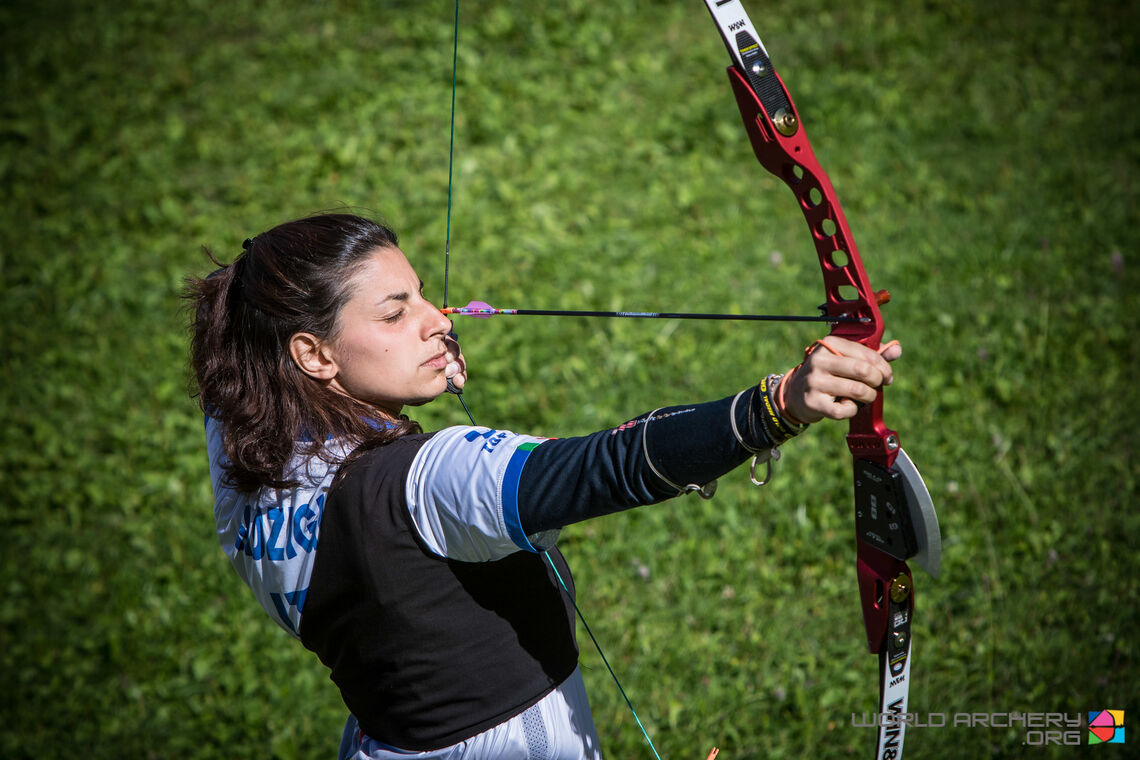
Competition
The barebow was introduced at the first World Archery Field Championships in 1969 as a more instinctive style of archery. It has been used in the field archery competitions at the World Games since 1985.
Internationally, barebow archers competed in only the World Archery Field Championships and World Archery 3D Championships until 2020, when the discipline was recognised for target archery – and added as an official category for the Indoor Archery World Series.
In field archery competition, barebow archers shoot over distances ranging from 5 to 50 metres at target faces measuring 20 to 80 centimetres in diameter.
In target archery competition, barebow archers shoot over a distance of 50 metres at target face measuring 122 centimetres in diameter. Matches are decided using the set system.
World Archery also recognises barebows for other disciplines, including indoor and 3D archery.
Famous competitive barebow archers include five-time World Archery Field Champion Erik Jonsson, two-time World Games Champion Giuseppe Seimandi and cross-discipline specialist Cinzia Noziglia.

